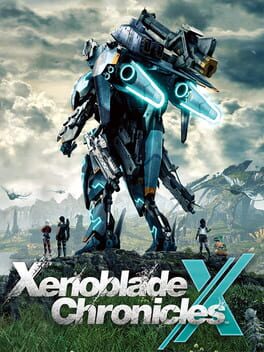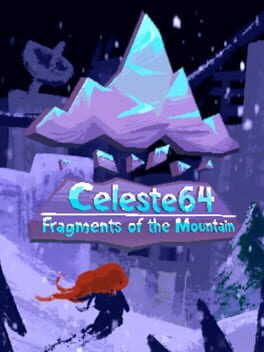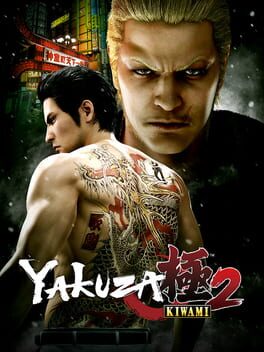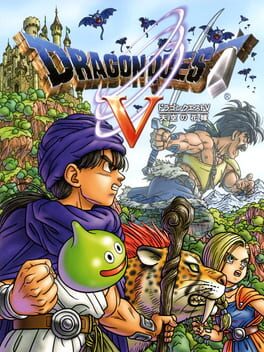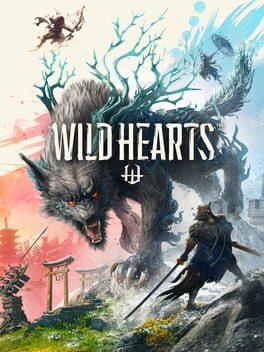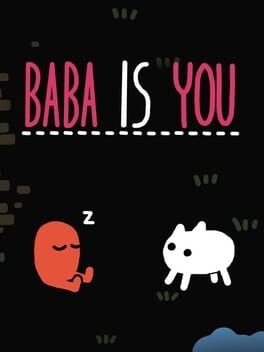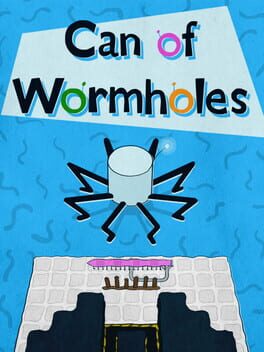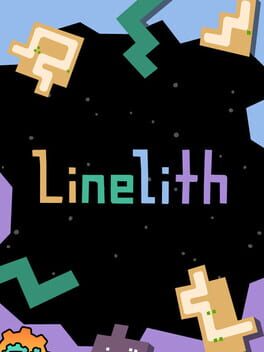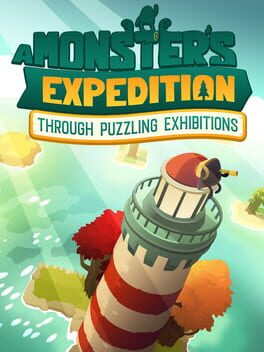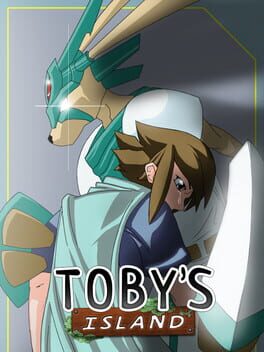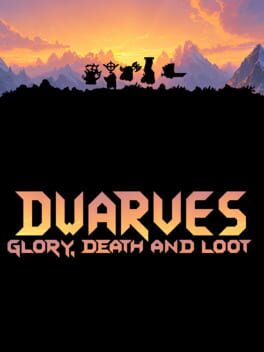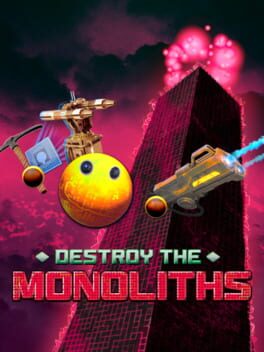scottyscotty
10 reviews liked by scottyscotty
Balatro
2024
Having put a good ~40 hours into Balatro so far (and I will be putting more into it in the future), I feel comfortable saying that while it's really good, it's not the be-all end-all of rogue-likes.
What Balatro does well is presentation, style, and simplicity. The game is immediately intuitive if you know poker, the music is calming, the spritework is incredible. You can boot it up, and in an hour, have a solid grasp on all the major mechanics of the game. This isn't Isaac, where the rules of the game are changing with every item you get, nor is it Gungeon, which demands a pretty substantial learning curve. Balatro is accessible, stylish, and fun.*
At lower levels anyway. What I've found is that eventually, you hit a brick wall of a learning curve. When you're halfway up the difficulty ladder and going for harder joker unlocks, the sheen begins to waver a bit. On higher difficulties, I feel completely at the RNG's mercy. Whether I get usable jokers, boss blinds that kill me on the spot, or useful skips isn't something I can affect in any way.
While this isn't out of the ordinary - indeed, you'd be a fool to expect a rogue-like without RNG - Balatro feels especially defeating at this hump. This is still poker. A bad series of draws, an unlucky blind, and you're dead regardless of how well you tried to build your deck. And for some, this won't be an issue at all. But as someone raised on easier roguelikes, these setbacks feel more frustrating than anything.
This isn't to be overly negative, however. Balatro is a wonderful game, and definitely worth your time. It's cheap, and even if you drop off at the 30 hour mark, you'll have more than got your money's worth. It feels fresh, and I'm delighted to have such a prominent, popular, new game on the roguelike block. It's probably the best addition to the genre since Vampire Survivors. Just beware the midgame slump, and don't burn yourself out by playing dead run after dead run for hours.
What Balatro does well is presentation, style, and simplicity. The game is immediately intuitive if you know poker, the music is calming, the spritework is incredible. You can boot it up, and in an hour, have a solid grasp on all the major mechanics of the game. This isn't Isaac, where the rules of the game are changing with every item you get, nor is it Gungeon, which demands a pretty substantial learning curve. Balatro is accessible, stylish, and fun.*
At lower levels anyway. What I've found is that eventually, you hit a brick wall of a learning curve. When you're halfway up the difficulty ladder and going for harder joker unlocks, the sheen begins to waver a bit. On higher difficulties, I feel completely at the RNG's mercy. Whether I get usable jokers, boss blinds that kill me on the spot, or useful skips isn't something I can affect in any way.
While this isn't out of the ordinary - indeed, you'd be a fool to expect a rogue-like without RNG - Balatro feels especially defeating at this hump. This is still poker. A bad series of draws, an unlucky blind, and you're dead regardless of how well you tried to build your deck. And for some, this won't be an issue at all. But as someone raised on easier roguelikes, these setbacks feel more frustrating than anything.
This isn't to be overly negative, however. Balatro is a wonderful game, and definitely worth your time. It's cheap, and even if you drop off at the 30 hour mark, you'll have more than got your money's worth. It feels fresh, and I'm delighted to have such a prominent, popular, new game on the roguelike block. It's probably the best addition to the genre since Vampire Survivors. Just beware the midgame slump, and don't burn yourself out by playing dead run after dead run for hours.
1. Awful as it is, I doubt I could have finished without the shutdown deadline. Xenoblade X took me 180 hours over two years - 30 with COVID in 2022, and 150 to get ahead of the shutdown in 2024. Maybe it was a good thing!!
2. I got really stuck in Chapter 10. I felt I had intuited combat, so I looked online for some advice. I realised I had absolutely no idea how the self-healing mechanic worked. It's easy to be annoyed when you have a moment like that, but I like it.
I don't understand why I win encounters, because the game doesn't want to tell me that. What I do understand is what to do to win, which is what the game actually taught me. Because I never managed to kill Xenoblade X, it feels more alive. Fights could always go either way, so I try my best to survive with the tools I have. I think that feeling is perfect for this game. I definitely think it's why I kept feeling tense in fights for 180 hours.
3. I was disappointed that after your mech starts flying about 120 hours in, the area themes all get replaced by a jaunty Sawano track. But I realise now that the Skell flying theme was actually a valiant, self-sacrificing hero, protecting the area themes from being zoned out by the player after 180 hours. Thank you, Monolith. Thank you, Sawano.
4. It's fascinating how good the side missions & affinity missions are. Xenoblade X's narrative is about a merc exploring a whole different planet, taking on the wildest sicko-inclined jobs, and spending time with their cool friends while nasty things happen to them. Xenoblade X is not about the main story, which is about 5% of the runtime. The moment you realise and appreciate that, you recognise how great it is to be engaging in X-Files nightmares through the cockpit of your giant mech.
5. Worth noting you only enter that cockpit after spending 60 hours on the ground earning your license. This is the true face of pinnacle.
2. I got really stuck in Chapter 10. I felt I had intuited combat, so I looked online for some advice. I realised I had absolutely no idea how the self-healing mechanic worked. It's easy to be annoyed when you have a moment like that, but I like it.
I don't understand why I win encounters, because the game doesn't want to tell me that. What I do understand is what to do to win, which is what the game actually taught me. Because I never managed to kill Xenoblade X, it feels more alive. Fights could always go either way, so I try my best to survive with the tools I have. I think that feeling is perfect for this game. I definitely think it's why I kept feeling tense in fights for 180 hours.
3. I was disappointed that after your mech starts flying about 120 hours in, the area themes all get replaced by a jaunty Sawano track. But I realise now that the Skell flying theme was actually a valiant, self-sacrificing hero, protecting the area themes from being zoned out by the player after 180 hours. Thank you, Monolith. Thank you, Sawano.
4. It's fascinating how good the side missions & affinity missions are. Xenoblade X's narrative is about a merc exploring a whole different planet, taking on the wildest sicko-inclined jobs, and spending time with their cool friends while nasty things happen to them. Xenoblade X is not about the main story, which is about 5% of the runtime. The moment you realise and appreciate that, you recognise how great it is to be engaging in X-Files nightmares through the cockpit of your giant mech.
5. Worth noting you only enter that cockpit after spending 60 hours on the ground earning your license. This is the true face of pinnacle.
In the first half of the game or so it's pretty clear that you are playing one of the best puzzle games ever created by being clearly presented with a fully transparent physical logic that will never play no cheap magic tricks and do what a lot, or all, puzzle games always seek and never reach, keep showing level after level defying your conception of what can even be done with very simple rules every single time.
Now, earlier for some, later for others, you're going to get stuck. That's fine. About that time, the game clearly reveals itself as a masterpiece.
It’s at those times that the background elements will come to the foreground. While standing still with a total lack of ideas, searching for anything to hold onto, you’ll start appreciating the colors of the day and night cycle, the flower leaves rising with your steps, the ever present synth that rarely makes a full melody, the fire crackling, the waves threatening your sausages... You’ll even give it a rest, go take a walk, go live. And you’ll return without expecting it. The map is static, you know the exact consequence of an action before the movement, with the game closed too. So you’ll go to sleep and replace the sheep to count with the level that’s been there for days, already burnt into you. Take advantage of the lack of logic to build the possibilities back.
I guess there is something about frustration and wisdom (or knowledge) here, but it’s related to a particular greater topic: inspiration. And the patience it needs. You cannot invoke it by stomping against the same wall again and again in the same way. You can only clear your head, give it time, distance and hope that when inspiration comes you will be ready to welcome it properly.
Keep dreaming those sausages.
Now, earlier for some, later for others, you're going to get stuck. That's fine. About that time, the game clearly reveals itself as a masterpiece.
It’s at those times that the background elements will come to the foreground. While standing still with a total lack of ideas, searching for anything to hold onto, you’ll start appreciating the colors of the day and night cycle, the flower leaves rising with your steps, the ever present synth that rarely makes a full melody, the fire crackling, the waves threatening your sausages... You’ll even give it a rest, go take a walk, go live. And you’ll return without expecting it. The map is static, you know the exact consequence of an action before the movement, with the game closed too. So you’ll go to sleep and replace the sheep to count with the level that’s been there for days, already burnt into you. Take advantage of the lack of logic to build the possibilities back.
I guess there is something about frustration and wisdom (or knowledge) here, but it’s related to a particular greater topic: inspiration. And the patience it needs. You cannot invoke it by stomping against the same wall again and again in the same way. You can only clear your head, give it time, distance and hope that when inspiration comes you will be ready to welcome it properly.
Keep dreaming those sausages.
I HAVE DEFEATED MY DEMONS. ON ATTEMPT NUMBER 2 I DEFEATED MY DEMONS!!!!!!!
This is one of the best puzzle games I've ever played, please do not give up permanently on this. If you get stuck, come back, maybe you'll come back in a day, maybe in a few weeks, but this game is absolutely genius.
"Cooking isn't a sacrifice from the living to the dead - it's a gift from the dead to the living."
This is one of the best puzzle games I've ever played, please do not give up permanently on this. If you get stuck, come back, maybe you'll come back in a day, maybe in a few weeks, but this game is absolutely genius.
"Cooking isn't a sacrifice from the living to the dead - it's a gift from the dead to the living."
Yakuza Kiwami 2
2017
This review contains spoilers
I don’t think I’ve ever felt as sad while playing a jrpg as I felt when, after defeating the big evil of Dragon Quest V, I made a victory lap around the world, visiting old friends and allies, and called upon Bianca to find her exactly as I’d left her ten years earlier, alone and caring for her ailing father in a backwoods village. I rejected my childhood friend’s profession of love and married a rich girl I hardly knew cause she seemed cute and had a cute dog. I felt pretty grand about my decision for the rest of my playthrough, as her rich dad constantly showered us with gifts and praise. And I didn’t think about Bianca much at all
But once I’d saved the world I stormed back into her life for three whole minutes, just enough time to march my beautiful wife and adorable kids around her small log cabin, to foist a comically cruel situation upon her in which all she could do was mutter a few more words of praise for me and my perfect family, words I’d heard a thousand times already. And then I was out the door and flying away again on a dragon god’s back, without having asked a single question about her life or how she’s holding up. I didn’t even let her keep the sabrecat we rescued together as kids (a rescue that was her idea no less). I just kept him imprisoned in my monster wagon instead and forgot he existed
Dragon Quest V taught me that I’m an evil far worse than any demon lord
Incredible game though
But once I’d saved the world I stormed back into her life for three whole minutes, just enough time to march my beautiful wife and adorable kids around her small log cabin, to foist a comically cruel situation upon her in which all she could do was mutter a few more words of praise for me and my perfect family, words I’d heard a thousand times already. And then I was out the door and flying away again on a dragon god’s back, without having asked a single question about her life or how she’s holding up. I didn’t even let her keep the sabrecat we rescued together as kids (a rescue that was her idea no less). I just kept him imprisoned in my monster wagon instead and forgot he existed
Dragon Quest V taught me that I’m an evil far worse than any demon lord
Incredible game though
Let this be a warning to people who persist because the fans of this game keep telling you "it gets better, just stick with it".
It does not. If you don't like the game in the first 20 hours, you're not going to like the rest of it. I wanted to test this for myself and I stuck with it until the end of "An End to the Song" quest in Heavensward 3.3 since a lot of people told me that's the peak of the story. Here is how the game's main quest story is structured, and even though the Heavensward writing was definitely better than ARR's writing, this structure persisted.
-You get a quest
-The quest is talking to a political figure in a room for half an hour explaining to you what's happening in the world.
-you run to go talk to another person
-every single character has to explain to you how they feel about what just happened, in detail
-you repeat this for 10 quests
-finally you see something interesting happens
-there are another 10 quests where you have to hear every character plan out their next move and explain how they feel about what just happened to each other
-you queue up for a dungeon/trial and see a resolution
-the next 10 quests are characters talking about how they feel
-repeat
The story has high moments but they are drawn out and the rest of the story is poorly paced filler that detracts from the good parts. This game has no idea of the concept of "show, don't tell". I don't WANT to hear how characters feel about something, I would much rather try to insinuate it through their expressions, mood, tone, and personality. I took a break from the game after completing Heavensward and I forgot nearly the entire story in that time because it offers you nothing to think about at all, nothing is up to interpretation, it just spends an excruciating amount of time sitting you down in a room telling you how you should think and feel about everything rather than just letting you experience it.
Additionally this structure creates a gigantic disjoint between the story and gameplay. The NPCs you are experiencing the story with are not the people who you are running the dungeons/trials with, those are other players who are also supposedly extremely special powerful chosen ones just like you. When characters died I didn't feel sad because even though the game TOLD me they were traveling and fighting with me, when I actually was playing the game that is not what was happening, I was running around alone and fighting with random people in a matchmaking system. This game's story could be a visual novel with static JPGs and it would functionally be the same. None of the quests have any worthwhile objectives, most of them are literally running and teleporting back and forth between the same extremely small areas of the map and talking to people. There is almost no non-instanced content to do, there is very little reason to have a giant world to explore with other players. You read the massive exposition dumps, you use the duty finder to queue up for group content, you actually get to play a video game for a small amount of time, and you repeat. Every expansion takes about 40 hours and I am extremely burnt out already so I can't really see myself catching up to the current one.
It is a shame because I really like a lot about this game. I loved the first alliance raid with its FF3 references, I love the idea of an open-world Final Fantasy MMO since I grew up playing the older games. I love the world and music, I like the raids and dungeons. It's just that the bits of content that make the game worth it isn't worth enduring the grueling slog that is the MSQ. Unfortunately everything I have read online indicates the MSQ is the main draw of playing the game.
However, if you are enjoying the MSQ and you do like this game's writing, as I'm sure many people will given its popularity, then absolutely stick with it. Just don't let the game become a sunk cost fallacy if you aren't having fun. I spent 130 hours playing this but I could have realized it wasn't for me about 30 hours in.
It does not. If you don't like the game in the first 20 hours, you're not going to like the rest of it. I wanted to test this for myself and I stuck with it until the end of "An End to the Song" quest in Heavensward 3.3 since a lot of people told me that's the peak of the story. Here is how the game's main quest story is structured, and even though the Heavensward writing was definitely better than ARR's writing, this structure persisted.
-You get a quest
-The quest is talking to a political figure in a room for half an hour explaining to you what's happening in the world.
-you run to go talk to another person
-every single character has to explain to you how they feel about what just happened, in detail
-you repeat this for 10 quests
-finally you see something interesting happens
-there are another 10 quests where you have to hear every character plan out their next move and explain how they feel about what just happened to each other
-you queue up for a dungeon/trial and see a resolution
-the next 10 quests are characters talking about how they feel
-repeat
The story has high moments but they are drawn out and the rest of the story is poorly paced filler that detracts from the good parts. This game has no idea of the concept of "show, don't tell". I don't WANT to hear how characters feel about something, I would much rather try to insinuate it through their expressions, mood, tone, and personality. I took a break from the game after completing Heavensward and I forgot nearly the entire story in that time because it offers you nothing to think about at all, nothing is up to interpretation, it just spends an excruciating amount of time sitting you down in a room telling you how you should think and feel about everything rather than just letting you experience it.
Additionally this structure creates a gigantic disjoint between the story and gameplay. The NPCs you are experiencing the story with are not the people who you are running the dungeons/trials with, those are other players who are also supposedly extremely special powerful chosen ones just like you. When characters died I didn't feel sad because even though the game TOLD me they were traveling and fighting with me, when I actually was playing the game that is not what was happening, I was running around alone and fighting with random people in a matchmaking system. This game's story could be a visual novel with static JPGs and it would functionally be the same. None of the quests have any worthwhile objectives, most of them are literally running and teleporting back and forth between the same extremely small areas of the map and talking to people. There is almost no non-instanced content to do, there is very little reason to have a giant world to explore with other players. You read the massive exposition dumps, you use the duty finder to queue up for group content, you actually get to play a video game for a small amount of time, and you repeat. Every expansion takes about 40 hours and I am extremely burnt out already so I can't really see myself catching up to the current one.
It is a shame because I really like a lot about this game. I loved the first alliance raid with its FF3 references, I love the idea of an open-world Final Fantasy MMO since I grew up playing the older games. I love the world and music, I like the raids and dungeons. It's just that the bits of content that make the game worth it isn't worth enduring the grueling slog that is the MSQ. Unfortunately everything I have read online indicates the MSQ is the main draw of playing the game.
However, if you are enjoying the MSQ and you do like this game's writing, as I'm sure many people will given its popularity, then absolutely stick with it. Just don't let the game become a sunk cost fallacy if you aren't having fun. I spent 130 hours playing this but I could have realized it wasn't for me about 30 hours in.
Pikmin 4
2023
Wild Hearts
2023
Most folk with a lot of life experience will tell you that, when your gut says something, you should heed that biological advice. I’m one of those folk, and yet with Wild Hearts I found myself defying my own advice.
Prior to taking the plunge on this game, it threw up every red flag imaginable:
Published by EA, a company whose output errs on the miss side for me personally.
Developed by Omega Force, whose output I enjoy yet would not trust with anything other than a musou (after Bladestorm, anyway)
Poor launch rife with tech issues.
Relatively no impact; Wild Hearts was not spoken of by anyone after its release period passed.
Quiet subreddit, alarming for a 2023 release pushed by EA of all companies.
Total lack of a comprehensive wiki and not even Fextralife hopped on it.
Difficulty finding gameplay videos that aren’t either ‘newbie struggles with the first hour’ or ‘overtuned endgame build stomps enemies in 3-4 minutes’.
And more. So many more. There was not a single piece of reassuring evidence in Wild Hearts’ favour on the entire internet.
But I bought it anyway.
At heart, I am a Koei Tecmo shill. They are possibly the last company that I would say I have blind faith in. I hold some (or a lot of) love for the majority of their output, they hold as many of my favourite games/franchises as Capcom do, and of everything they’ve released in the last decade I’ve only really hated one title.
I also used to be a Capcom shill, for much the same reasons, but alas many of my favourite Capcom IPs succumbed to rot over time. Megaman fell to sequelitis, Resident Evil kowtowed to popular backlash and released two awful titles (7 and 8) back to back alongside two soulless remakes, Dead Rising was farmed out to a worse team who fundamentally misunderstood the series, Lost Planet tried to chase mainstream trends and forsook its identity, and Monster Hunter… God, Monster Hunter.
My relationship with Monster Hunter is akin to a marriage which has gone on too long, beyond the reconciliatory aid of counselling. I fell in love with the idea of Monster Hunter; of a game primarily comprised of boss fights and resource gathering. Where fights required preparation, map knowledge, familiarity with your weapon and knowledge of a monster’s behaviours.
It was a good idea, though… It didn’t really exist as I’d imagined it. Like all idealized daydreams, reality tends to be much more difficult to contest with. Much of what I’d wanted from Monster Hunter actually proved to be detrimental. The resource gathering simply slowed the experience down, often at the most annoying of times and sometimes even acting as a progress gate if I got unlucky. ‘Preparation’ soon became extraneous thanks to personal skill transferring between games, and I was eventually starved of fights that demanded I knuckle down and prepare accordingly. To say nothing of my loathing for nigh-mandatory pre-hunt rituals such as the Canteen, the entire sharpness mechanic, turf wars/monster invasions and the relative lack of skills making weapon-based decision making a relative nonfactor.
There are, of course, MH games that touch on things I want, but near the end of my time with the franchise I just wished they’d cut out all the shit and make it a series of straightforward boss fights.
Capcom then proceeded to do this with MH Rise, a game I rather distinctly hate on most counts. I came away from Sunbreak dejected and confused, unsure of what I really wanted from this genre. I’d been given what I allegedly wanted with Rise/Sunbreak, but it just wasn’t enough. MH just wasn’ enjoyable anymore.
Just under a year later, I spy Wild Hearts on sale for 40% off and decide to take a blind leap of faith.
“What’s the worst that could happen?” I ask myself.
I won’t spoil the whole answer, but I will tell you that I don’t think I need MH anymore.
Wild Hearts’ opening does not inspire faith, if I’m honest. It is a long slog through a mostly unremarkable environment with little in the way of combat, accentuated by cryptic dialogue which won’t make sense for 20~ hours and an unwinnable fight before you even get a tutorial. This I expect from most mediocre 6/10 AAA games, but not Koei Tecmo.
Fortunately it picks up almost immediately, and keeps going up and up. A brief mechanical tutorial gives way to a fight with a Ragetail - a large monster, no small fodder this time - and the absolutely game changing mechanic that is Karakuri, which really deserves its own section.
Every Monster Hunter clone has to contend with the question of:
“How do we separate ourselves from our influence?”
God Eater had transforming weapons and a decent emphasis on ranged, Soul Sacrifice let you… sacrifice souls, Toukiden had super abilities, and Dauntless was bad.
Wild Hearts’ answer is Karakuri.
Taking a leaf out of Fortnite’s book (trust me), WH saddles you with a resource named Karakuri Thread and offers you various buildable gadgets to summon during a hunt. There are ‘normal’ Karakuri such as boxes, springs, gliders and torches which are typically used as offensive/mobility tools. ‘Dragon’ Karakuri are semi-permanent map fixtures with a variety of functions. Some automatically harvest resources, some allow you to quickly traverse the map, some are merely cosmetic and some let you build fast travel points. I’ll talk about Dragon Karakuri later, because it’d be remiss of me to mention them without talking about maps and traversal.
At its core, Wild Hearts’ approach to MH gameplay is “less is more”. Weapon movesets are significantly less complex and their button assignment always boils down to ‘quick poke attacks’, ‘damage dealer’ and ‘special function’. While the different weapons feel unique, even the more braindead Monster Hunter weapons have a beefier movelist. This may make some of you scoff, but in truth the regular Karakuri exist to serve as a set of special moves.
When you first go through WH’s tutorial, it kindly points out that you can do a special plunging attack when vaulting from a crate Karakuri. What it does not tell you is that nearly every subsequent normal Karakuri has a special attack associated with it, each with their own function from weapon to weapon. The end result is a smaller core moveset, but a much larger conditional moveset. It helps to patch up weaknesses certain weapons might have against certain monsters - especially with slower weapons that lack gap closers.
Sure, the core movesets are enough to win fights, but choosing which normal Karakuri to bring really adds an extra layer to fight prep. Especially when one factors in Fusion Karakuri - combinations of multiple Karakuri that merge into something new. Sure a glider and stake may be more useful than a torch, but in forsaking the torch one also loses out on the incredible utility of on-demand flashbang grenades and actual cannons.
That said, there are only 6 normal Karakuri, so the system is not bogged down with overcomplexity or too many options. Regardless of what you take, you will always have some extra offensive options and will always have a bevy of utility Fusion Karakuri. While there are likely going to be a few ‘Fuck, I wish I brought [Karakuri]’ moments, not once did I ever feel stuck because I brought a certain combination.
As for the actual monsters… I don’t look too kindly on most other MH clones’ rosters, primarily because they lack visual cohesiveness and tend to just be ‘what looks cool?’ as opposed to ‘what looks cool and fits the world?’ This isn’t inherently bad but when your progenitor game manages about 20 visually striking + fitting designs per entry, it's a bit disappointing.
Wild Hearts’ angle on this front is ‘standard animals, but if they were elemental demigods’. It stays consistent until the credits roll (barring one major exception) and well into the post-release additions. While Monster Hunter favours a biological explanation for its monsters, in Wild Hearts the Kemono often used just straight up elemental magic and the fights are exceptional for it.
Actually the fights are exceptional all around. On top of being visual spectacles, Wild Hearts takes off the kid gloves relatively early and tends to avoid jobber monsters. Even Ragetail, the starting boss which is quite literally just an angry rat, has a handful of moves meant to catch careless players off guard (like that FUCKING double tailspin). Nioh might’ve been Team Ninja as opposed to Omega Force, but the general premise of ‘shit gets hard early, better use all your tools’ is still here. Later fights escalate from ‘elemental spirits’ to ‘actual divine beings’ and with it, the spectacle and difficulty increase. Wild Hearts never felt like it plateau’d on that front, there were no sudden dips or spikes in difficulty. It was smooth sailing till the end, baby.
…Most of the time. Towards the end of the game, the Golden Tempest (Byakko) appears as a mandatory fight and it’s… Not great. Monster Hunter players will probably be familiar with Barioth, a hyper aggressive and irritating monster that becomes trivial once you break its parts - assuming you live long enough. Golden Tempest is that game’s equivalent, being absurdly fast and capable of comboing in ways that no other basegame monster is able to. Add on ludicrous range from its house-sized tail and it was a nightmare to fight. It has the negligible honour of being the only monster I switched to a ranged weapon for.
Combat only makes up 2/3rds of the game, though. Like Monster Hunter before it, non-combat stuff is a whole beast unto itself. At first, it might not seem that way given how many Monster Hunter staples have been executed entirely: Consumables are gone almost completely (more on that later), resources are simply either crafting materials or ingredients, sharpness as a mechanic does not exist and thus neither do whetstones, there is no Canteen, traps/deployables/etc are Fusion Karakuri and thus both innate & infinite, ranged weapons do not require ammo whatsoever and even crafting has been reduced to simply weapon/armor crafting.
Instead, Wild Hearts introduces some curveballs to keep things fresh.
In place of an automated canteen, there is a manual one. Across your hunts/exploration, you will run into ingredients - fish, vegetables, grain, etc - and can eat them raw for benefits (at least until your food gauge hits 100). These are your consumables.
However… Several Dragon Karakuri aid in food preparation via drying/fermenting/pickling/smoking ingredients. Taking a leaf out of BOTW’s book, albeit more complicated, the creation of fulfilling and buff-heavy food is a process of refinement.
Throw fish on a drying rack, toss vegetables in the fermenting cask for vinegar, pickle them both in a jar and then smoke them to bring out the flavour (and enhance the buffs).
At first it can be kind of monotonous, but later Dragon Karakuri automates the acquisition process. Combined with the later game allowing you to place more Dragon Karakuri overall, simply having more racks/jars/casks removes much of the tedium. It helps that food processes no matter where you are, and thus can safely be left while you go out hunting.
As for the other major component to pre-fight prep… The thing about Dragon Karakuri is that they can be placed pretty much anywhere on the map. You may think ‘surely there are some limits’ and I did too but… No. Aside from minor proximity exclusions to prevent overlap, you can drop fast travel points or ziplines anywhere. While one does have to upgrade Dragon Pits with resources to get more Karakuri capacity, this ultimately adds to the experience. Starting off, your only options are to travel on foot, climb walls using crate Karakuri (which have a height cap), or wasting valuable wood energy on a zipline that might not even be much of a time saver.
Later, you not only have ideal routes plotted out, but built. Even normal Karakuri stick around - unless destroyed by Kemono - which allows for even brief spring hops over broken bridges. Like something borrowed from a Factory/Automation game, by the end of your time with Wild Hearts you’ll most likely have sculpted the map to suit your needs and preferences, and formed a relationship with it through said sculpting.
Ultimately, though, it does cut a lot and those craving the more intimate prep of Monster Hunter will find themselves wanting. Like World and Rise, this game is focused more on getting you into the hunt immediately.
Which is to your benefit, because weapons are a serious investment in this game. As opposed to a standard videogame ‘tech tree’ where you ascend branches but always go up, Wild Hearts allows your weapon tree to move down, sideways, diagonally and even upwards. Unlike Monster Hunter, weapons are blessed with skills which can be inherited when you make a move along the tree. The end result is that the most powerful of weapon builds require a full Mario Kart course rotation around the tree to acquire the ideal skills. And, of course, lots of builds mean lots of materials needed. It is a small blessing that even the G-Rank equivalent monsters do not succumb to HP bloat.
Armor is less of an investment, but not by much. In place of jamming armor orbs in for more defence, Wild Hearts’ upgrades manifest as ‘path’ upgrades. Choosing to spec into either Human or Kemono alignments, you can sink extra parts into a piece of armor to change the appearance, raise the defense and of course unlock certain path perks - which replace set bonuses outright. It’s not quite as in depth as weapons, but it is a nice added layer that helps set construction have a bit more thought in it.
Helping both of these is the absolute stellar visual design. Yes, it is another Koei Tecmo game set in Sengoku Japan, but they’ve taken the mythological influences to heart and created a treasure trove of designs that’re unique blends of samurai/ninja/onmyoji outfits and monster parts. Gone are sets which are overdesigned, too, so mix sets are much easier to assemble.
It’s not all sunshine and roses though, even if this is my new favourite hunting game.
Wild Hearts has a story, and while it’s not a bad story, it does have an awful habit of getting in the way. It never becomes as handholdy and intrusive as MH World’s, but it does often take up an uncomfortable amount of screenspace right after a particularly grand hunt. That you lose the ability to free hunt in a region if there’s a story quest to be started there only compounds how irritating it can be, and the post-game ‘main story’ objective simply being “hunt freely” betrays a certain degree of self-awareness.
And the hub… man. Even with fast travel points, it still feels akin to a Sengoku version of MH World’s Astera. Being a portside city, the center of Minato is taken up by a large expanse of water. Not to mention it’s built into a cliffside, so it is annoyingly vertical - so vertical that ziplines need to be daisy chained to allow swift access to higher areas without taking the stairs… Except there’s some difficulty in finding a spot for them, as the distance between walkable terrain and a suitable zipline location is often too long for a zipline to reach.
Further compounding this is the game’s numerous sidequests, which are often handed out by NPCs in the most annoying of places. This is obviously a temporary issue that goes away once you run out of sidequests, but there are a decent amount and turning them in quickly becomes tedious. Especially given their middling rewards. I was frankly relieved to be able to dismantle most of my ziplines and retain only the direct line to the player house.
Speaking of dodgy things, actually, I feel a need to bring up this game’s myriad technical issues. I normally steer clear of them, as oftentimes they can be patched out (either officially or by fans) or they’re so minor that they have no tangible effect on the experience but… I don't know. Wild Hearts has a lot of them.
Collision is either buggy or nonexistent on a lot of terrain that should be walkable, and on the flip side there are several gaping holes in the Fort map that can be traversed as usual.
What the game considers ‘acceptable’ for Karakuri placement sometimes gets muddled, and this is especially prevalent with ziplines which will often throw up a big red “Nuh uh” circle on what should be a fine location for one.
This game’s implementation of adaptive exposure (a technique used to replicate how humans get blinded by bright light and then adjust, plus how they adjust to darkness) is really really buggy. Manytimes did I exit a cave only for the screen to be entirely white for a few seconds - long enough for Amaterasu to kill me. The same goes for chromatic aberration.
And hundreds of other minor bugs. This is a wonderful game, but it is not well put together even four months and several patches after release.
Lastly… This isn’t something I’d usually bring up, and it’s sort of nullified due to how much mobility the player has, but…
The hitboxes are just straight up dogshit. Way too many Kemono have forward-lunging attacks with tank sized hitboxes, often hitting BEHIND them (which makes dodgerolls dangerous) or straight above. This is especially prominent with the Lavaback line, bipedal gorillas whose hitbox size can be measured in square miles, which only gets worse with enrage. Again, you can often iframe through these with springs or go over them with gliders, but it gets really annoying when some weapons beg for Lavaback materials and I fear a less experienced player will get massacred by them.
All in all though, if Monster Hunter is the peak of the hunting genre then Wild Hearts is the zenith. Karakuri alone are a game changer, to say nothing of all the omissions that make the overall experience much more enjoyable. This is, by far and away with no contest, my favourite hunting game and then some.
As of writing, the game isn’t done yet and is currently releasing the G-Rank equivalent expansion for free patch-by-patch, so I hope that by the game’s end of service it’s even better.
Prior to taking the plunge on this game, it threw up every red flag imaginable:
Published by EA, a company whose output errs on the miss side for me personally.
Developed by Omega Force, whose output I enjoy yet would not trust with anything other than a musou (after Bladestorm, anyway)
Poor launch rife with tech issues.
Relatively no impact; Wild Hearts was not spoken of by anyone after its release period passed.
Quiet subreddit, alarming for a 2023 release pushed by EA of all companies.
Total lack of a comprehensive wiki and not even Fextralife hopped on it.
Difficulty finding gameplay videos that aren’t either ‘newbie struggles with the first hour’ or ‘overtuned endgame build stomps enemies in 3-4 minutes’.
And more. So many more. There was not a single piece of reassuring evidence in Wild Hearts’ favour on the entire internet.
But I bought it anyway.
At heart, I am a Koei Tecmo shill. They are possibly the last company that I would say I have blind faith in. I hold some (or a lot of) love for the majority of their output, they hold as many of my favourite games/franchises as Capcom do, and of everything they’ve released in the last decade I’ve only really hated one title.
I also used to be a Capcom shill, for much the same reasons, but alas many of my favourite Capcom IPs succumbed to rot over time. Megaman fell to sequelitis, Resident Evil kowtowed to popular backlash and released two awful titles (7 and 8) back to back alongside two soulless remakes, Dead Rising was farmed out to a worse team who fundamentally misunderstood the series, Lost Planet tried to chase mainstream trends and forsook its identity, and Monster Hunter… God, Monster Hunter.
My relationship with Monster Hunter is akin to a marriage which has gone on too long, beyond the reconciliatory aid of counselling. I fell in love with the idea of Monster Hunter; of a game primarily comprised of boss fights and resource gathering. Where fights required preparation, map knowledge, familiarity with your weapon and knowledge of a monster’s behaviours.
It was a good idea, though… It didn’t really exist as I’d imagined it. Like all idealized daydreams, reality tends to be much more difficult to contest with. Much of what I’d wanted from Monster Hunter actually proved to be detrimental. The resource gathering simply slowed the experience down, often at the most annoying of times and sometimes even acting as a progress gate if I got unlucky. ‘Preparation’ soon became extraneous thanks to personal skill transferring between games, and I was eventually starved of fights that demanded I knuckle down and prepare accordingly. To say nothing of my loathing for nigh-mandatory pre-hunt rituals such as the Canteen, the entire sharpness mechanic, turf wars/monster invasions and the relative lack of skills making weapon-based decision making a relative nonfactor.
There are, of course, MH games that touch on things I want, but near the end of my time with the franchise I just wished they’d cut out all the shit and make it a series of straightforward boss fights.
Capcom then proceeded to do this with MH Rise, a game I rather distinctly hate on most counts. I came away from Sunbreak dejected and confused, unsure of what I really wanted from this genre. I’d been given what I allegedly wanted with Rise/Sunbreak, but it just wasn’t enough. MH just wasn’ enjoyable anymore.
Just under a year later, I spy Wild Hearts on sale for 40% off and decide to take a blind leap of faith.
“What’s the worst that could happen?” I ask myself.
I won’t spoil the whole answer, but I will tell you that I don’t think I need MH anymore.
Wild Hearts’ opening does not inspire faith, if I’m honest. It is a long slog through a mostly unremarkable environment with little in the way of combat, accentuated by cryptic dialogue which won’t make sense for 20~ hours and an unwinnable fight before you even get a tutorial. This I expect from most mediocre 6/10 AAA games, but not Koei Tecmo.
Fortunately it picks up almost immediately, and keeps going up and up. A brief mechanical tutorial gives way to a fight with a Ragetail - a large monster, no small fodder this time - and the absolutely game changing mechanic that is Karakuri, which really deserves its own section.
Every Monster Hunter clone has to contend with the question of:
“How do we separate ourselves from our influence?”
God Eater had transforming weapons and a decent emphasis on ranged, Soul Sacrifice let you… sacrifice souls, Toukiden had super abilities, and Dauntless was bad.
Wild Hearts’ answer is Karakuri.
Taking a leaf out of Fortnite’s book (trust me), WH saddles you with a resource named Karakuri Thread and offers you various buildable gadgets to summon during a hunt. There are ‘normal’ Karakuri such as boxes, springs, gliders and torches which are typically used as offensive/mobility tools. ‘Dragon’ Karakuri are semi-permanent map fixtures with a variety of functions. Some automatically harvest resources, some allow you to quickly traverse the map, some are merely cosmetic and some let you build fast travel points. I’ll talk about Dragon Karakuri later, because it’d be remiss of me to mention them without talking about maps and traversal.
At its core, Wild Hearts’ approach to MH gameplay is “less is more”. Weapon movesets are significantly less complex and their button assignment always boils down to ‘quick poke attacks’, ‘damage dealer’ and ‘special function’. While the different weapons feel unique, even the more braindead Monster Hunter weapons have a beefier movelist. This may make some of you scoff, but in truth the regular Karakuri exist to serve as a set of special moves.
When you first go through WH’s tutorial, it kindly points out that you can do a special plunging attack when vaulting from a crate Karakuri. What it does not tell you is that nearly every subsequent normal Karakuri has a special attack associated with it, each with their own function from weapon to weapon. The end result is a smaller core moveset, but a much larger conditional moveset. It helps to patch up weaknesses certain weapons might have against certain monsters - especially with slower weapons that lack gap closers.
Sure, the core movesets are enough to win fights, but choosing which normal Karakuri to bring really adds an extra layer to fight prep. Especially when one factors in Fusion Karakuri - combinations of multiple Karakuri that merge into something new. Sure a glider and stake may be more useful than a torch, but in forsaking the torch one also loses out on the incredible utility of on-demand flashbang grenades and actual cannons.
That said, there are only 6 normal Karakuri, so the system is not bogged down with overcomplexity or too many options. Regardless of what you take, you will always have some extra offensive options and will always have a bevy of utility Fusion Karakuri. While there are likely going to be a few ‘Fuck, I wish I brought [Karakuri]’ moments, not once did I ever feel stuck because I brought a certain combination.
As for the actual monsters… I don’t look too kindly on most other MH clones’ rosters, primarily because they lack visual cohesiveness and tend to just be ‘what looks cool?’ as opposed to ‘what looks cool and fits the world?’ This isn’t inherently bad but when your progenitor game manages about 20 visually striking + fitting designs per entry, it's a bit disappointing.
Wild Hearts’ angle on this front is ‘standard animals, but if they were elemental demigods’. It stays consistent until the credits roll (barring one major exception) and well into the post-release additions. While Monster Hunter favours a biological explanation for its monsters, in Wild Hearts the Kemono often used just straight up elemental magic and the fights are exceptional for it.
Actually the fights are exceptional all around. On top of being visual spectacles, Wild Hearts takes off the kid gloves relatively early and tends to avoid jobber monsters. Even Ragetail, the starting boss which is quite literally just an angry rat, has a handful of moves meant to catch careless players off guard (like that FUCKING double tailspin). Nioh might’ve been Team Ninja as opposed to Omega Force, but the general premise of ‘shit gets hard early, better use all your tools’ is still here. Later fights escalate from ‘elemental spirits’ to ‘actual divine beings’ and with it, the spectacle and difficulty increase. Wild Hearts never felt like it plateau’d on that front, there were no sudden dips or spikes in difficulty. It was smooth sailing till the end, baby.
…Most of the time. Towards the end of the game, the Golden Tempest (Byakko) appears as a mandatory fight and it’s… Not great. Monster Hunter players will probably be familiar with Barioth, a hyper aggressive and irritating monster that becomes trivial once you break its parts - assuming you live long enough. Golden Tempest is that game’s equivalent, being absurdly fast and capable of comboing in ways that no other basegame monster is able to. Add on ludicrous range from its house-sized tail and it was a nightmare to fight. It has the negligible honour of being the only monster I switched to a ranged weapon for.
Combat only makes up 2/3rds of the game, though. Like Monster Hunter before it, non-combat stuff is a whole beast unto itself. At first, it might not seem that way given how many Monster Hunter staples have been executed entirely: Consumables are gone almost completely (more on that later), resources are simply either crafting materials or ingredients, sharpness as a mechanic does not exist and thus neither do whetstones, there is no Canteen, traps/deployables/etc are Fusion Karakuri and thus both innate & infinite, ranged weapons do not require ammo whatsoever and even crafting has been reduced to simply weapon/armor crafting.
Instead, Wild Hearts introduces some curveballs to keep things fresh.
In place of an automated canteen, there is a manual one. Across your hunts/exploration, you will run into ingredients - fish, vegetables, grain, etc - and can eat them raw for benefits (at least until your food gauge hits 100). These are your consumables.
However… Several Dragon Karakuri aid in food preparation via drying/fermenting/pickling/smoking ingredients. Taking a leaf out of BOTW’s book, albeit more complicated, the creation of fulfilling and buff-heavy food is a process of refinement.
Throw fish on a drying rack, toss vegetables in the fermenting cask for vinegar, pickle them both in a jar and then smoke them to bring out the flavour (and enhance the buffs).
At first it can be kind of monotonous, but later Dragon Karakuri automates the acquisition process. Combined with the later game allowing you to place more Dragon Karakuri overall, simply having more racks/jars/casks removes much of the tedium. It helps that food processes no matter where you are, and thus can safely be left while you go out hunting.
As for the other major component to pre-fight prep… The thing about Dragon Karakuri is that they can be placed pretty much anywhere on the map. You may think ‘surely there are some limits’ and I did too but… No. Aside from minor proximity exclusions to prevent overlap, you can drop fast travel points or ziplines anywhere. While one does have to upgrade Dragon Pits with resources to get more Karakuri capacity, this ultimately adds to the experience. Starting off, your only options are to travel on foot, climb walls using crate Karakuri (which have a height cap), or wasting valuable wood energy on a zipline that might not even be much of a time saver.
Later, you not only have ideal routes plotted out, but built. Even normal Karakuri stick around - unless destroyed by Kemono - which allows for even brief spring hops over broken bridges. Like something borrowed from a Factory/Automation game, by the end of your time with Wild Hearts you’ll most likely have sculpted the map to suit your needs and preferences, and formed a relationship with it through said sculpting.
Ultimately, though, it does cut a lot and those craving the more intimate prep of Monster Hunter will find themselves wanting. Like World and Rise, this game is focused more on getting you into the hunt immediately.
Which is to your benefit, because weapons are a serious investment in this game. As opposed to a standard videogame ‘tech tree’ where you ascend branches but always go up, Wild Hearts allows your weapon tree to move down, sideways, diagonally and even upwards. Unlike Monster Hunter, weapons are blessed with skills which can be inherited when you make a move along the tree. The end result is that the most powerful of weapon builds require a full Mario Kart course rotation around the tree to acquire the ideal skills. And, of course, lots of builds mean lots of materials needed. It is a small blessing that even the G-Rank equivalent monsters do not succumb to HP bloat.
Armor is less of an investment, but not by much. In place of jamming armor orbs in for more defence, Wild Hearts’ upgrades manifest as ‘path’ upgrades. Choosing to spec into either Human or Kemono alignments, you can sink extra parts into a piece of armor to change the appearance, raise the defense and of course unlock certain path perks - which replace set bonuses outright. It’s not quite as in depth as weapons, but it is a nice added layer that helps set construction have a bit more thought in it.
Helping both of these is the absolute stellar visual design. Yes, it is another Koei Tecmo game set in Sengoku Japan, but they’ve taken the mythological influences to heart and created a treasure trove of designs that’re unique blends of samurai/ninja/onmyoji outfits and monster parts. Gone are sets which are overdesigned, too, so mix sets are much easier to assemble.
It’s not all sunshine and roses though, even if this is my new favourite hunting game.
Wild Hearts has a story, and while it’s not a bad story, it does have an awful habit of getting in the way. It never becomes as handholdy and intrusive as MH World’s, but it does often take up an uncomfortable amount of screenspace right after a particularly grand hunt. That you lose the ability to free hunt in a region if there’s a story quest to be started there only compounds how irritating it can be, and the post-game ‘main story’ objective simply being “hunt freely” betrays a certain degree of self-awareness.
And the hub… man. Even with fast travel points, it still feels akin to a Sengoku version of MH World’s Astera. Being a portside city, the center of Minato is taken up by a large expanse of water. Not to mention it’s built into a cliffside, so it is annoyingly vertical - so vertical that ziplines need to be daisy chained to allow swift access to higher areas without taking the stairs… Except there’s some difficulty in finding a spot for them, as the distance between walkable terrain and a suitable zipline location is often too long for a zipline to reach.
Further compounding this is the game’s numerous sidequests, which are often handed out by NPCs in the most annoying of places. This is obviously a temporary issue that goes away once you run out of sidequests, but there are a decent amount and turning them in quickly becomes tedious. Especially given their middling rewards. I was frankly relieved to be able to dismantle most of my ziplines and retain only the direct line to the player house.
Speaking of dodgy things, actually, I feel a need to bring up this game’s myriad technical issues. I normally steer clear of them, as oftentimes they can be patched out (either officially or by fans) or they’re so minor that they have no tangible effect on the experience but… I don't know. Wild Hearts has a lot of them.
Collision is either buggy or nonexistent on a lot of terrain that should be walkable, and on the flip side there are several gaping holes in the Fort map that can be traversed as usual.
What the game considers ‘acceptable’ for Karakuri placement sometimes gets muddled, and this is especially prevalent with ziplines which will often throw up a big red “Nuh uh” circle on what should be a fine location for one.
This game’s implementation of adaptive exposure (a technique used to replicate how humans get blinded by bright light and then adjust, plus how they adjust to darkness) is really really buggy. Manytimes did I exit a cave only for the screen to be entirely white for a few seconds - long enough for Amaterasu to kill me. The same goes for chromatic aberration.
And hundreds of other minor bugs. This is a wonderful game, but it is not well put together even four months and several patches after release.
Lastly… This isn’t something I’d usually bring up, and it’s sort of nullified due to how much mobility the player has, but…
The hitboxes are just straight up dogshit. Way too many Kemono have forward-lunging attacks with tank sized hitboxes, often hitting BEHIND them (which makes dodgerolls dangerous) or straight above. This is especially prominent with the Lavaback line, bipedal gorillas whose hitbox size can be measured in square miles, which only gets worse with enrage. Again, you can often iframe through these with springs or go over them with gliders, but it gets really annoying when some weapons beg for Lavaback materials and I fear a less experienced player will get massacred by them.
All in all though, if Monster Hunter is the peak of the hunting genre then Wild Hearts is the zenith. Karakuri alone are a game changer, to say nothing of all the omissions that make the overall experience much more enjoyable. This is, by far and away with no contest, my favourite hunting game and then some.
As of writing, the game isn’t done yet and is currently releasing the G-Rank equivalent expansion for free patch-by-patch, so I hope that by the game’s end of service it’s even better.

